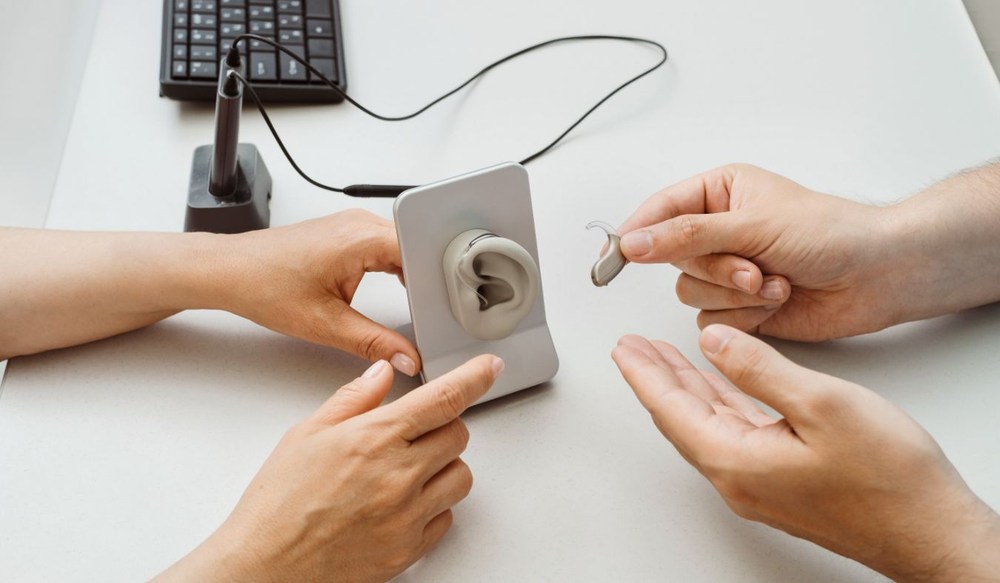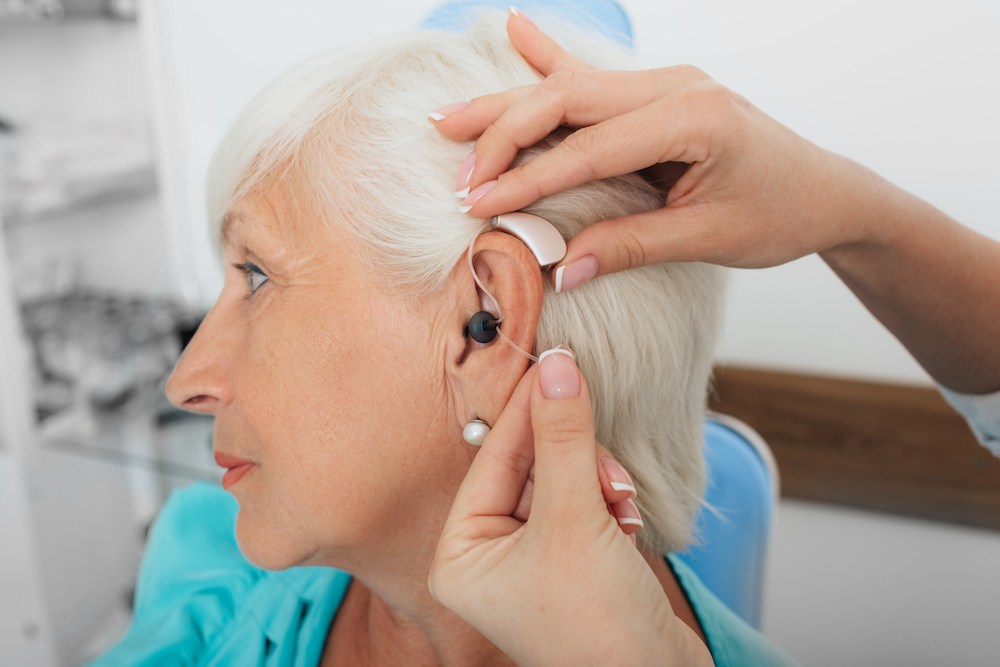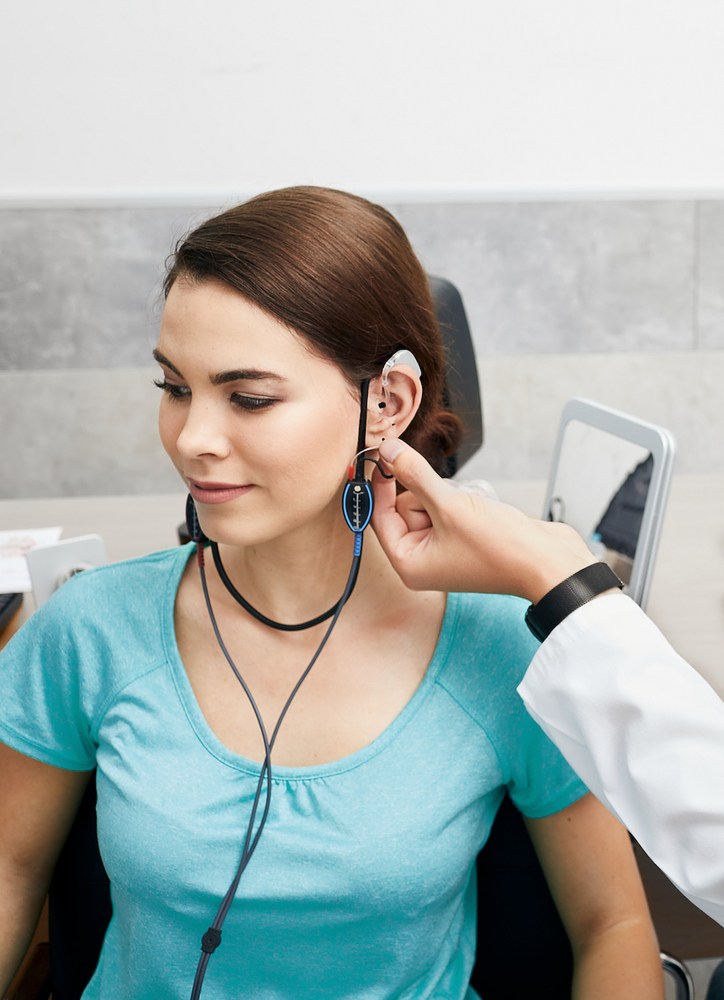The Impact of Hearing Aid Design on Wearer Comfort
The design of a hearing aid affects more than just how it looks. It
We Are Proud to be a VA Provider! SCHEDULE TODAY

By: admin | October 20, 2025
The design of a hearing aid affects more than just how it looks. It determines whether you’ll actually wear it consistently, which is the whole point of getting one in the first place. If a hearing aid feels uncomfortable, causes irritation or doesn’t fit your lifestyle, you’re likely to leave it in the drawer instead of using it throughout your day. Comfort isn’t just about physical fit either. It includes how the device feels during long periods of wear, whether it stays secure when you’re active, and how easy it is to manage without constant adjustments.
Understanding your comfort needs before choosing a hearing aid can save you from weeks or months of frustration and wasted time. Some people find certain styles cause pressure points after a few hours, while others struggle with devices that feel too visible or awkward to insert and remove. These issues might seem minor at first, but they add up quickly when you’re wearing hearing aids from morning until night.
Taking the time to explore different options and communicate clearly with your audiologist about what matters to you means you’ll end up with a device you’re willing to wear every day, not one that sits unused because it never quite felt right.
Comfort directly affects how often and effectively someone wears their hearing aid. When a device fits well and feels good in the ear, it’s easier to wear for long periods without distraction or irritation. Uncomfortable devices can lead to frequent adjustments, removal or even avoidance, which reduces the benefits of consistent hearing support. A comfortable hearing aid allows you to focus on daily activities, conversations and work without thinking about the device itself, helping you get the most out of your hearing experience.
Consistent use is important because your brain adapts to the sounds your hearing aid provides. If you wear your device regularly, your auditory system can more effectively process speech and environmental sounds, which improves clarity and understanding. Comfort encourages this regular use, preventing breaks caused by soreness or pressure. When a hearing aid feels natural and unobtrusive, it becomes part of your routine rather than a distraction, allowing you to rely on it throughout the day and maintain better overall hearing performance.
The materials used in a hearing aid have a major impact on comfort and wearability. Soft, flexible materials like medical-grade silicone are commonly used for parts that touch the skin, which helps reduce irritation and prevent soreness during extended wear. Smooth plastics and lightweight components contribute to a less noticeable feel, making it easier to wear the device throughout the day.
Different materials also respond differently to moisture, temperature and skin contact. Materials that are hypoallergenic or designed for sensitive skin can prevent reactions and maintain comfort even in warm or active conditions. Choosing hearing aids made with these thoughtful materials helps ensure that the device feels gentle, secure and comfortable without needing constant adjustment.
The shape of a hearing aid affects how it sits in or around your ear and how comfortable it feels during daily use. Devices that are carefully contoured to fit the natural curves of your ear reduce pressure points and help the hearing aid stay securely in place. A shape that follows the ear’s anatomy allows the device to feel less noticeable, making it easier to wear for long periods without discomfort. Even small adjustments in the design, like tapered edges or angled tips, can make a significant difference in how natural the hearing aid feels while moving, talking or wearing glasses.
Shape also influences how the hearing aid interacts with sound and the surrounding environment. A design that fits snugly without gaps can help the device stay in position so that it functions as intended, while a poorly shaped device may shift or require frequent adjustments. Comfortable shapes also make it easier to insert and remove the device, reducing frustration during everyday use. Overall, the combination of thoughtful shaping and proper fit ensures that wearing a hearing aid supports your hearing needs without drawing attention to the device itself.
Modern hearing aids include several features designed for comfort, performance and ease of use. Many devices use advanced digital technology to help you hear better in noisy environments and adjust automatically to different settings.
Small microphones capture sounds from all directions, while digital processors clarify speech. Wireless connectivity allows you to stream calls or music directly from your smartphone. Many models now offer rechargeable batteries for added convenience, and water-resistant coatings protect the device from sweat or rain. These features all work together to provide a comfortable and reliable experience each day.
Weight and balance can affect how comfortable your hearing aid feels over long periods. A device that is too heavy may pull on your ear or feel awkward after several hours. Even small differences in weight can impact daily comfort.
A well-balanced hearing aid sits evenly on your ear, reducing soreness and keeping the device steady while you move. Lightweight designs are especially helpful if you wear your hearing aids for many hours each day. Choosing a model with the right weight and balance supports regular use and long-term comfort.
Hearing aids come in a variety of styles, and thinking about these differences is important for overall comfort and usability. The shape and size of a device influence how it fits in or around your ear, how secure it feels during everyday activities and how it interacts with things like glasses or headphones. Even without focusing on specific models, the general style can affect whether the device feels natural or requires frequent adjustments.
Each style also affects how the device sits against your skin and how it responds to movement throughout the day. Some designs may provide a looser or tighter fit depending on ear shape, which can influence comfort during work, exercise or social activities. Considering all available styles helps you choose a hearing aid that suits your lifestyle and daily routines, making consistent use easier and reducing distractions caused by discomfort or poor fit.
Behind-the-ear models are designed to sit comfortably behind the outer ear, with a tube or wire connecting to an earpiece that rests in the ear canal. This placement allows the device to be slightly larger than other styles, which can make it easier to handle and adjust throughout the day. The fit behind the ear helps keep the device stable during movement, and the overall shape tends to distribute weight evenly, reducing pressure on the ear itself.
BTE designs can also accommodate a wide range of hearing needs without feeling cumbersome. The larger size allows for components that handle higher sound amplification and longer battery life, while still being comfortable for extended wear. Because the device sits mostly outside the ear, it is easier to clean and maintain, which can improve the overall experience of using a hearing aid daily.
In-the-ear models fit entirely within the outer ear, which makes them more discreet than behind-the-ear styles. The design molds to the contours of your ear, which can create a comfortable, secure fit for many wearers. Because the device sits directly in the ear, weight and pressure are distributed differently than BTE models, so the shape and fit are important factors in comfort.
ITE styles can feel more integrated into daily activities since they are less visible and tend to stay in place well. However, the design can make them more sensitive to earwax, moisture or changes in the ear canal, so careful attention to hygiene and fit is important. Considering these factors helps ensure that the hearing aid remains comfortable while providing consistent sound support throughout the day.
Canal-worn hearing aids sit mostly or completely inside the ear canal, which makes them very discreet and nearly invisible to others. Their small size and snug fit can make them feel natural once inserted, reducing awareness of the device during normal activities. This style can be ideal for wearers who prioritize subtlety and want a device that does not interfere with glasses or other accessories.
Because canal-worn devices fit deeply in the ear, they often provide a direct path for sound, which can enhance clarity in everyday listening situations. The close fit helps keep the hearing aid stable, even during movement, and allows for comfortable long-term wear when properly fitted. Understanding these advantages helps you weigh how the design interacts with your daily routine, comfort needs and lifestyle preferences.
Adjusting to new hearing aids takes time, and giving yourself a gradual introduction can make the experience more comfortable. Start by wearing your devices for a few hours each day and slowly increase the duration as your ears get used to the fit and feel. This allows your auditory system to adapt to amplified sounds without overwhelming your brain, helping you process speech and environmental noises more naturally. Taking small steps in this way reduces fatigue and makes it easier to incorporate the devices into your daily routine.
Paying attention to how the hearing aids feel and sound during different activities is another helpful strategy. You may notice certain situations, like busy restaurants or crowded outdoor spaces, require adjustments in volume or settings. Keeping notes on these experiences and discussing them with your audiologist allows for fine-tuning of the devices. With time, patience and regular follow-up, the process of adjusting to new hearing aids becomes smoother, and using them can feel more effortless and natural in your everyday life.
The design of your hearing aid affects both comfort and how likely you are to wear it each day. Features like materials, size, shape and fit all work together to support daily comfort and help you get the most from your device. If you notice discomfort or have questions about which design options might suit you best, reaching out early can make a positive difference.
For more information about hearing aid designs or assistance finding the most comfortable fit for your lifestyle, contact our team at Professional Hearing Solutions in Port Orange, FL at (386) 478-7345. We are here to answer your questions and support you in finding a hearing solution that fits comfortably into your everyday life.
Tags: benefits of hearing aids, hearing aid repair, hearing aid styles

The design of a hearing aid affects more than just how it looks. It
By: admin | October 20, 2025

Nothing beats summer’s outdoor possibilities. Whether you’re
By: admin | July 29, 2025

Hearing tests have come a long way from the basic “raise your hand
By: admin | June 20, 2025
